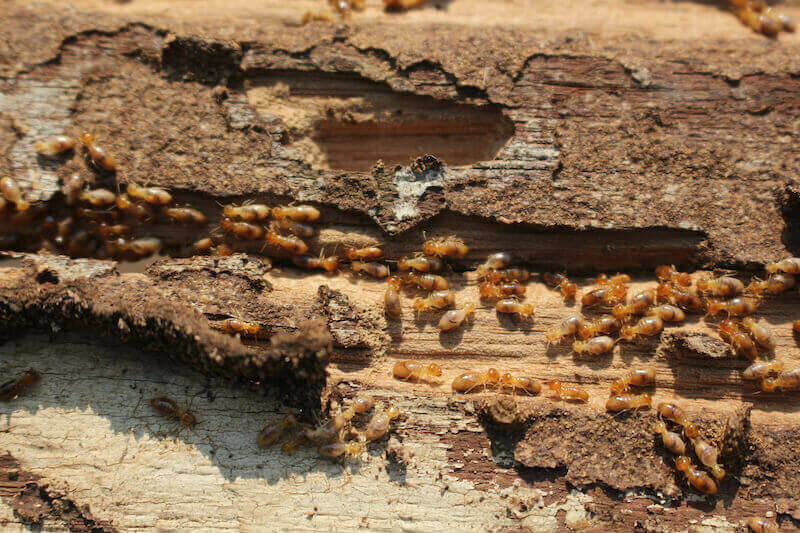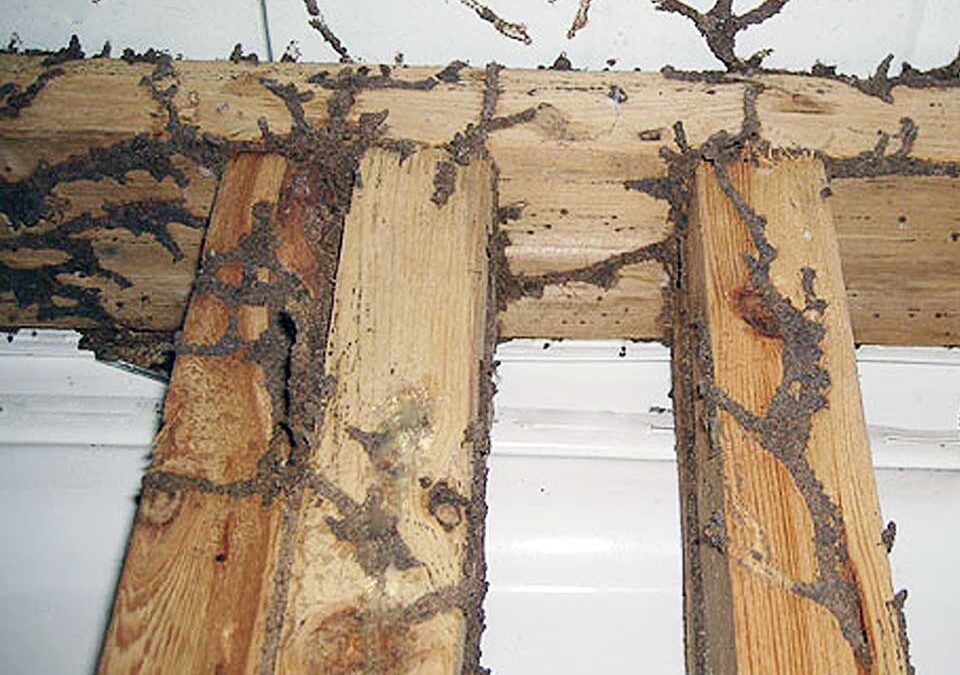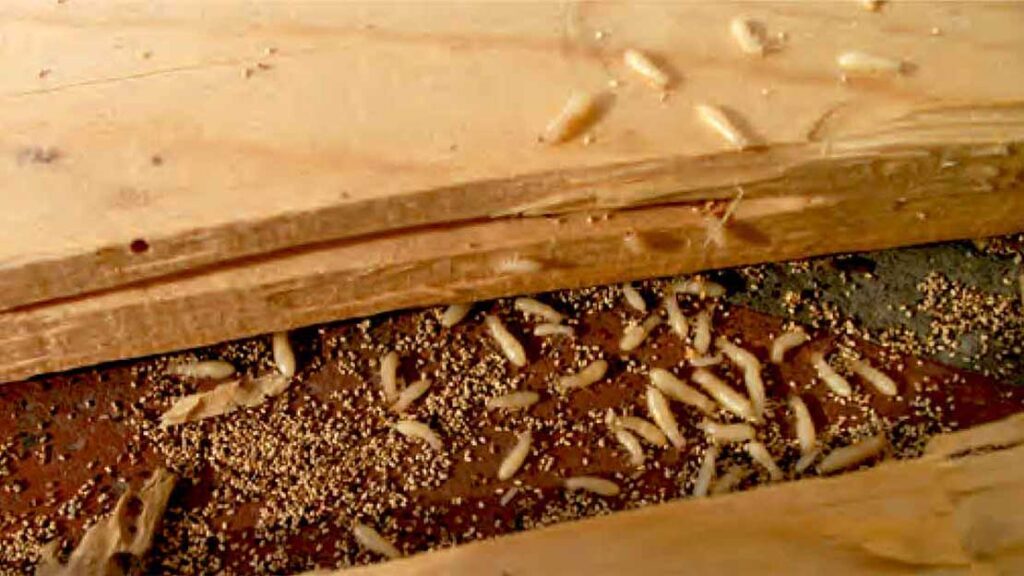Termite Removal Services by Pest Control Xperts in Chowchilla
Serving homes, apartments, dormitories, hotels, and healthcare offices throughout Chowchilla, Le Grand, Planada, Dos Palos, South Dos Palos, Firebaugh, California, and Surrounding Areas
Professional Termite Control for Chowchilla, Le Grand, Planada, Dos Palos, South Dos Palos, & Firebaugh, California
You’ve seen the tell-tale signs, the subtle shifts in your wood, the unsettling trails. You’ve tried the sprays, the traps, the DIY solutions that promise quick fixes. Yet, the problem persists, a nagging worry that grows with each passing day. This isn’t just a few stray Termites; it’s a hidden, thriving colony, silently devouring the very foundation of your property. Your attempts, while well-intentioned, are merely illusions undone by the unseen activity deep within your walls. At [Chowchilla] Pest Control Experts, we understand this frustration, and we’re here to offer the definitive solution: professional Termite control that eliminates the problem at its source, targeting the queen and the entire nest. We don’t just treat the symptoms; we eradicate the problem completely, restoring your peace of mind and protecting your most valuable asset.
Why Termites Appear in Chowchilla and Surrounding Communities
The Central Valley of California, with its unique climate and geography, creates an ideal breeding ground for Termites. Our region experiences hot, dry summers followed by cooler, sometimes damp, winters. This seasonal fluctuation drives Termite behavior, as they seek stable environments with consistent moisture and food sources. This is particularly true for subterranean Termites, which thrive in moist soil. Local geographical features, including proximity to irrigation canals, agricultural lands, and even the occasional riverbed, contribute to the soil moisture levels that subterranean Termites crave. The fertile agricultural landscape, while beneficial for crops, also provides ample decaying wood and cellulose for Termite colonies to establish and grow. Furthermore, the diverse architecture across Chowchilla, Le Grand, Planada, Dos Palos, South Dos Palos, and Firebaugh presents specific vulnerabilities. From historic wooden homes with older foundations that may have settled or cracked over time, to dense commercial districts with complex underground utility networks, and newer suburban developments with freshly laid landscaping, every structure offers potential entry points and sustenance for these wood-destroying insects. Foundation cracks, leaky pipes, poor drainage around the perimeter of a building, and even issues with a neighbor’s property, such as neglected woodpiles or decaying trees, can all contribute to creating an inviting environment for a Termite infestation. Understanding these local factors is crucial for effective Termite control in Chowchilla and its surrounding areas.
Types of Termites Commonly Found in California
California is home to several Termite species, each with distinct behaviors, preferred habitats, and the specific risks they pose to properties. Understanding which type you’re dealing with is crucial for effective removal and long-term prevention.
- Subterranean Termites: These are unequivocally the most destructive Termites in California, responsible for billions of dollars in damage annually. They live in vast underground colonies that can number in the millions and build intricate mud tubes to travel between their nest and food sources, which are often the wooden structures of your home or business. These tubes protect them from predators and dry air. Subterranean Termites require constant moisture to survive, making areas with high humidity or water leaks particularly vulnerable. They consume cellulose materials, including wood, paper, and fabric. Signs of their presence include the tell-tale mud tubes on foundations, walls, or in crawl spaces, and damaged wood that appears hollow when tapped, often with a distinctive “honeycomb” pattern inside.
- Drywood Termites: Unlike their subterranean counterparts, drywood Termites do not require soil contact. They infest dry, sound wood, including structural timbers, attic framing, furniture, and even dead trees. These Termites are often identified by their fecal pellets, known as frass, which are small, hard, six-sided pellets resembling tiny grains of sand or coffee grounds. Frass is typically found near infested wood, often in small piles. Another common sign is the presence of swarmers, which are winged Termites that emerge from the colony to establish new ones, especially during warmer months. You might find discarded wings near windowsills or light fixtures after a swarm.
- Dampwood Termites: These are typically larger Termites that infest wood with high moisture content, such as decaying logs, tree stumps, or wood in direct contact with the ground. While less common in homes than subterranean or drywood Termites, they can still cause significant damage to water-damaged wood, particularly in areas with persistent leaks or poor ventilation. Their presence often indicates an underlying moisture problem that needs to be addressed promptly to prevent further infestation. Dampwood Termites do not build mud tubes, but they may plug their entry holes with their own fecal matter.
- Other Potential Termites (though less common in this specific region): While Subterranean, Drywood, and Dampwood are the primary concerns, it’s worth noting that other species exist. For instance, Formosan Termites, a highly aggressive subterranean species, are not widely established in California’s Central Valley but are a constant threat due to their rapid colony growth and extensive damage capabilities. Regular inspections are key to identifying any emerging threats.
Problems Termites Create for Homes and Businesses
An unchecked Termite infestation is far more than just a nuisance; it’s a serious, escalating threat to your property, your financial stability, and your peace of mind. These insidious wood-destroying insects work silently and relentlessly, often for years, before their presence becomes visibly apparent. By that time, the damage can already be substantial, leading to significant repair needs.
For homeowners, the primary concern is extensive structural damage. Termites consume cellulose, which is the main component of wood. This means they can compromise the integrity of your home’s most critical elements: weakened floors that sag and creak, sagging ceilings that hint at instability above, and damaged support beams that threaten the very foundation of your dwelling. The hidden nature of their colonies means that by the time you see visible signs, such as buckling wood or paint, the damage can already be substantial, leading to costly and disruptive repairs. Beyond the structural concerns, the constant frustration of their presence, the worry of what new damage they might be inflicting, and the potential for a diminished property value can significantly impact your daily life.
For businesses, a Termite infestation can be even more devastating. Beyond the direct structural damage to the building, a visible Termite problem can severely damage brand reputation, leading to lost revenue and a significant erosion of customer trust. Imagine a customer discovering frass or mud tubes in your establishment – it immediately raises questions about hygiene and maintenance, potentially driving away valuable clientele. The disruption caused by Termite treatment and subsequent repairs can also lead to operational downtime, further impacting profitability. Protecting your business from Termites is not just about structural integrity; it’s about safeguarding your reputation and ensuring business continuity.
Ultimately, the problems Termites create extend beyond mere inconvenience. They are a silent, persistent threat that can undermine the safety, value, and comfort of your property, whether it’s a cherished home or a thriving business. Early detection and professional intervention are paramount to mitigating these significant risks.
Signs of an Escalating Termite Infestation
Early detection is absolutely key to minimizing Termite damage and preventing a minor problem from becoming a catastrophic one. Termites are masters of stealth, but they do leave behind tell-tale clues if you know what to look for. Be vigilant for these warning signs, as they often indicate an active and potentially escalating Termite infestation:
- Mud Tubes: These are perhaps the most definitive sign of subterranean Termite activity. Subterranean Termites build pencil-sized mud tubes, often resembling thin veins of dirt, on exterior walls, foundations, wooden beams, or in crawl spaces. These tubes serve as protected pathways, shielding them from dry air and predators as they travel between their underground nests and your home’s wood. If you break open a tube and find active Termites, you have a clear infestation.
- Damaged Wood: Wood that sounds hollow when tapped is a strong indicator of internal Termite activity. Termites consume wood from the inside out, leaving a thin veneer of paint or wood on the surface. You might also notice wood that appears darkened, blistered, or has a maze-like pattern beneath the surface. Small, pin-sized holes in wood surfaces can also be exit points for swarmers or entry points for Termites.
- Frass (Termite Droppings): For drywood Termites, small, granular pellets resembling sawdust, coffee grounds, or even tiny grains of sand are a strong indicator of an infestation. These fecal pellets, known as frass, are often found in small, conical piles near infested wood, such as window sills, door frames, or furniture. The color of the frass can vary depending on the type of wood consumed.
- Discarded Wings: After swarming, Termites shed their delicate, translucent wings. These discarded wings, often found in piles, can be near windowsills, doorways, light fixtures, or other light sources, as swarmers are attracted to light. Finding these wings, especially indoors, is a clear sign that a Termite colony has been active nearby.
- Swarmers: The actual presence of winged Termites, known as “swarmers,” especially indoors, is an unmistakable and urgent sign of an active colony. Swarming typically occurs in the spring or after rain, as these reproductive Termites emerge to establish new colonies. Do not confuse them with flying ants; Termite swarmers have straight antennae, a broad waist, and two pairs of wings of equal length.
- Termite Trails or Galleries: While less common to see directly, faint trails or channels within exposed wood can indicate their presence. These “galleries” are the pathways Termites create as they tunnel through wood.
- Unusual Odors: Some people report a faint, musty odor, often described as similar to mildew or mold, associated with a large Termite colony. This odor is often due to the Termites’ waste products and the moisture they introduce into the wood.
- Sagging Floors or Ceilings: In advanced infestations, the structural damage can become so severe that floors may begin to sag or buckle, and ceilings might show signs of water damage or drooping, even without a water leak.
- Tight-Fitting Doors or Windows: As Termites damage door and window frames, the wood can swell or warp, making doors and windows difficult to open or close.
If you observe any of these signs, it is crucial to act quickly. Do not attempt to self-treat, as this can often make the problem worse. Instead, contact a professional Termite control expert immediately for a thorough inspection.
Why Professional Extermination is Essential for Termite Removal
The allure of DIY Termite solutions is understandable. The immediate thought might be to grab a can of spray or set out some traps, hoping to quickly eliminate the visible pests. However, these methods are often temporary illusions undone by the complex, hidden nature of a Termite colony. Store-bought sprays and traps might eliminate a few visible foragers, but they rarely, if ever, reach the heart of the problem: the queen and the hidden nest, which can be deep within your walls, foundation, or even underground. This superficial treatment can even be counterproductive, causing the colony to “bud” or split into multiple smaller, harder-to-find colonies, exacerbating your infestation and making future professional treatment more challenging and extensive.
Termites are masters of survival, with intricate social structures and vast networks of tunnels. Their colonies can extend deep within your property, making complete eradication a challenge for the untrained individual. Without the specialized knowledge, equipment, and products that professionals possess, you’re merely scratching the surface of the problem. You might kill a few thousand Termites, but if the queen is still alive and reproducing, the colony will simply rebound, and the damage will continue silently.
Professional Termite treatment goes far beyond these surface-level solutions. At [Chowchilla] Pest Control Experts, we employ advanced techniques and specialized products designed to penetrate deep into the colony’s infrastructure. Our methods are specifically engineered to eliminate the queen, which is the ultimate key to colony destruction, and ensure the entire nest is eradicated. This comprehensive approach is the only way to achieve true, lasting Termite removal and effectively protect your property from future damage. We understand the biology and behavior of Termites, allowing us to target them where they live and breed, not just where they forage. Trusting a professional is an investment in the long-term health and structural integrity of your home or business.
Our Termite Removal Method
At [Chowchilla] Pest Control Experts, our approach to Termite removal is thorough, strategic, and meticulously tailored to your specific situation. We believe in a multi-faceted strategy that addresses the current infestation and implements measures to prevent future problems.
- Consultation & Detailed Inspection: We begin with a comprehensive and detailed inspection of your entire property, both interior and exterior. Our expert technicians are trained to identify the specific Termite species present, locate the extent of the infestation, pinpoint all active entry points, and identify vulnerable areas that may attract Termites. This includes examining foundations, crawl spaces, attics, wood structures, and surrounding landscaping. This initial step is critical for developing an effective treatment plan.
- Customized Treatment Plan: Based on the findings from our inspection, we develop a customized treatment plan specifically designed for your property and the type of Termite infestation. This may include a combination of highly effective methods:
- Termite Baiting Systems: These systems involve strategically placing bait stations around your property. Termites forage for the bait, carry it back to the colony, and share it, effectively eliminating the entire colony, including the queen, over time. This method is highly effective and environmentally responsible.
- Targeted Liquid Treatments: We may apply targeted liquid treatments to create a protective barrier around your home’s foundation or directly to infested areas. These advanced products are designed to be non-repellent, meaning Termites unknowingly pass through the treated zone, carrying the product back to the colony and spreading it throughout, leading to complete eradication.
- Direct Wood Treatment: For localized drywood Termite infestations, we may use direct wood treatments to eliminate Termites within specific wooden structures.
- Exclusion & Maintenance Recommendations: Beyond active treatment, we provide practical recommendations and, where applicable, implement strategies to prevent future infestations. This includes advising on sealing cracks and crevices in foundations, improving drainage around your property to reduce moisture, removing wood-to-soil contact, and addressing other conducive conditions that attract Termites.
- Ongoing Monitoring & Follow-Up: Our commitment to you extends beyond the initial treatment. Our service includes ongoing monitoring to ensure the Termites are completely eradicated and to detect any new activity early. We schedule follow-up visits to assess the effectiveness of the treatment and make any necessary adjustments, providing you with long-term peace of mind.
Why Chowchilla Relies on [Chowchilla] Pest Control Experts
Residents and businesses throughout Chowchilla, Le Grand, Planada, Dos Palos, South Dos Palos, and Firebaugh trust [Chowchilla] Pest Control Experts for their Termite control needs, and for good reason. Our deep regional familiarity means we don’t just understand Termites in general; we understand the specific challenges these pests pose in our unique Central Valley climate and diverse architectural landscape. We know the local conditions that contribute to infestations and tailor our strategies accordingly.
Our unwavering focus is always on complete colony destruction, not just temporary fixes. We don’t believe in quick-spray solutions that offer false hope. Our goal is to eliminate the Termite problem at its source, ensuring lasting protection for your property. We utilize safe application methods, prioritizing the well-being of your family, your pets, and the surrounding environment. Our technicians are highly trained in the latest, most effective and responsible Termite control techniques.
Furthermore, our commitment to follow-up and ongoing support ensures your property remains Termite-free long after the initial treatment. We stand by our work, providing the vigilance and expertise necessary to maintain a Termite-free environment. When you choose [Chowchilla] Pest Control Experts, you’re choosing a partner dedicated to protecting your property and restoring your peace of mind.
Don’t let Termites continue to silently destroy your property and peace of mind. The frustration of endless DIY attempts and the nagging worry of hidden damage can end today. Take decisive action against these destructive pests. Contact us for an immediate consultation and let [Chowchilla] Pest Control Experts provide the lasting solution you deserve, safeguarding your home or business for years to come.
Our service area proudly includes Chowchilla, Le Grand, Planada, Dos Palos, South Dos Palos, Firebaugh, and all relevant zip codes in these communities, including 93610, 93635, 93665, 93624, 93665, and 93622.




